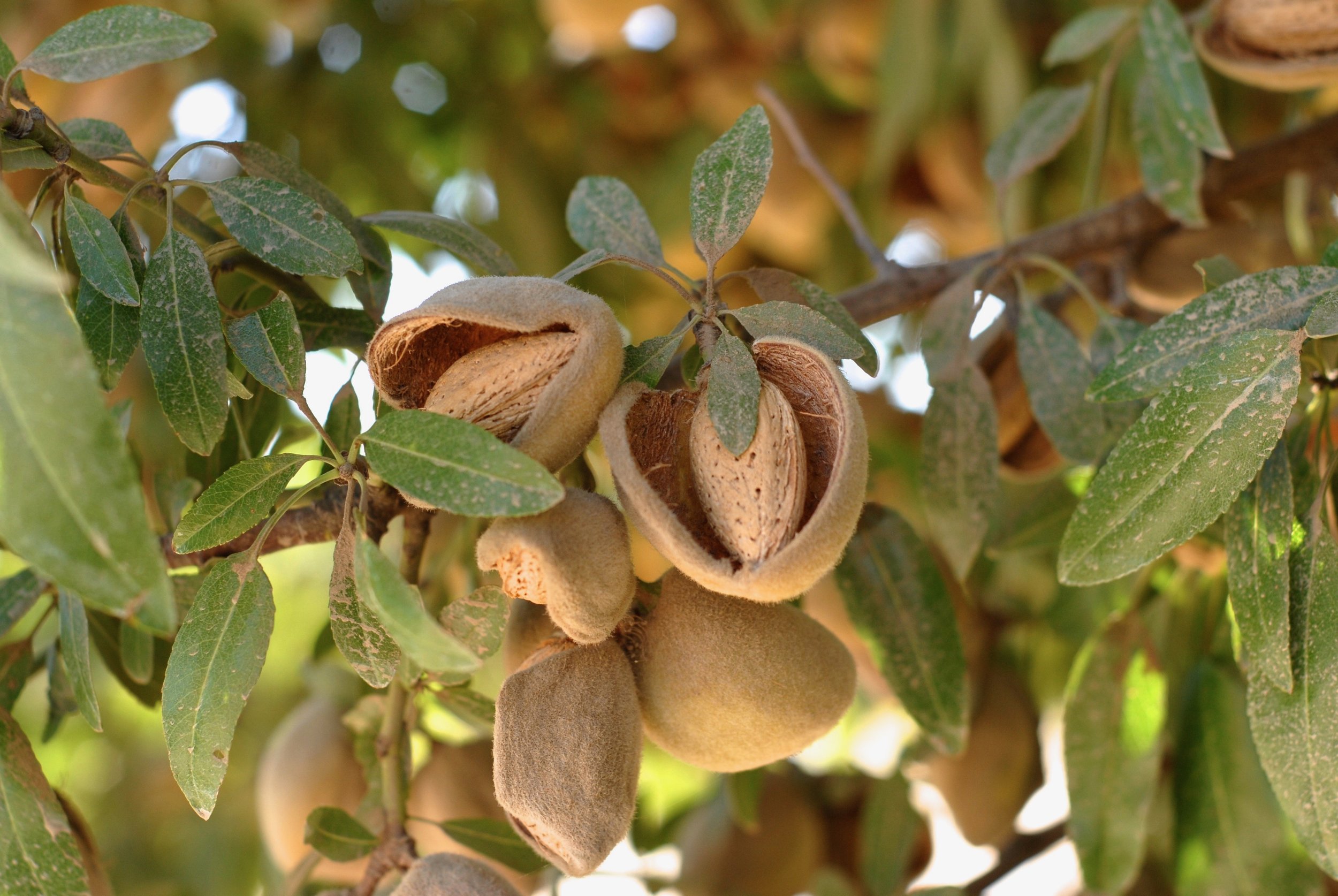California Almond Water Usage: Updated
Given the combination of their vast acreages, high water requirements, and export crop status, almonds are a controversial crop in California. As an export crop, they play no role in national food security: 70% of the annual harvest is shipped overseas. Here are some basic facts about almonds and water.
How much of California’s developed water does agriculture use compared to its percentage of the economy? (Developed water is surface water that is stored, transported, and used by humans. It does not include water dedicated to environmental uses and/or water that runs to the ocean or alkali lake beds.)
In an average year, California agriculture accounts for about 34 million acre-feet (MAF) of developed water, or 80% of the 43 million acre-feet of developed water that is typically available. [1]
Additionally, growers pump vast volumes of groundwater. California yields about 77 MAF of water annually from all sources (conveyance projects and groundwater) for all uses – agriculture, cities and the environment.[2]
For all the water it uses, agriculture contributes only about 2.5% to California’s economy.
Total urban demand for developed water – for homes, commercial enterprises, and industry – is 8 MAF a year. Of that, household use is 5 MAF.
[1] https://water.ca.gov/Programs/Water-Use-And-Efficiency/Agricultural-Water-Use-Efficiency
Drought, population growth and development have all put added demand on California’s limited water supply over the past two decades. How much has almond acreage expanded during this time?
According to the California Department of Food and Agriculture, almond acreage went from 640,000 acres to 1,640,000 acres between 2004 and 2021. San Joaquin County alone went from 1,757 acres to 43,121 between 2008 and 2021.
Since 2021, almond acreages have declined in some areas due to reduced water availability, marginal soils and fluctuating almond prices. Currently, statewide plantings stand at 1,563,000 acres. Pressure to further reduce almond acreages is mounting, particularly in the western San Joaquin Valley, which relies almost exclusively on federal and state project water and is characterized by soils impaired with high concentrations of salt and toxic selenium. [3]
How much of California’s developed water supply do almonds use?
Almonds use between 4.7 to 5.5 million acre-feet of water per year, depending on water availability and bearing acreage. As cited, California’s total agricultural demand for developed water is 34 MAF – so almonds account for between 14.4% to 16.75% of the state’s agricultural developed water consumption.
Residential water use in 2020 was 5 MAF – meaning almonds use roughly the same amount of water as all California households combined. This is unsustainable.
[3] Updated statistics from Land IQ, a geospatial analysis and land use consultancy: https://www.landiq.com/
There are simply too many almonds being planted in areas with unsustainable water supplies (minimal to no groundwater, uncertain or no surface water). Many of these areas are south of the Delta. Almonds and other nuts can be grown responsibly in the eastern Sacramento Valley, as they have been for decades.
C-WIN is not opposed to growing almonds; we’re opposed to growing them unsustainably on impaired lands with government-subsidized water, and at the expense of the environment and urban ratepayers. As noted, almonds are largely an export crop; approximately 70% of the state’s crop is shipped abroad for private benefit.
Water is a public trust resource, and Californians must regain control of it as they face a future certain to be beleaguered by drought, low reservoirs and over-drafted aquifers. We can't continue to subsidize agribusiness plutocrats with the water ratepayers need for basic survival.
Calculation basis
Almonds use approximately 3 to 4 acre-feet of water per acre per year. We have assumed a range of 3 to 3.5 acre-feet for this calculation. Most of the almond acreage is south of the Delta, where each acre requires up to 4 acre-feet of water per year, but some plantings are not fully mature and would not use as much water annually as bearing orchards.
1,563,000 acres of almonds x 3.5 acre-feet = approximately 5.5 million acre-feet
Or conservatively:
1,563,000 acres of almonds x 3 acre-feet = 4.7 million acre-feet.



